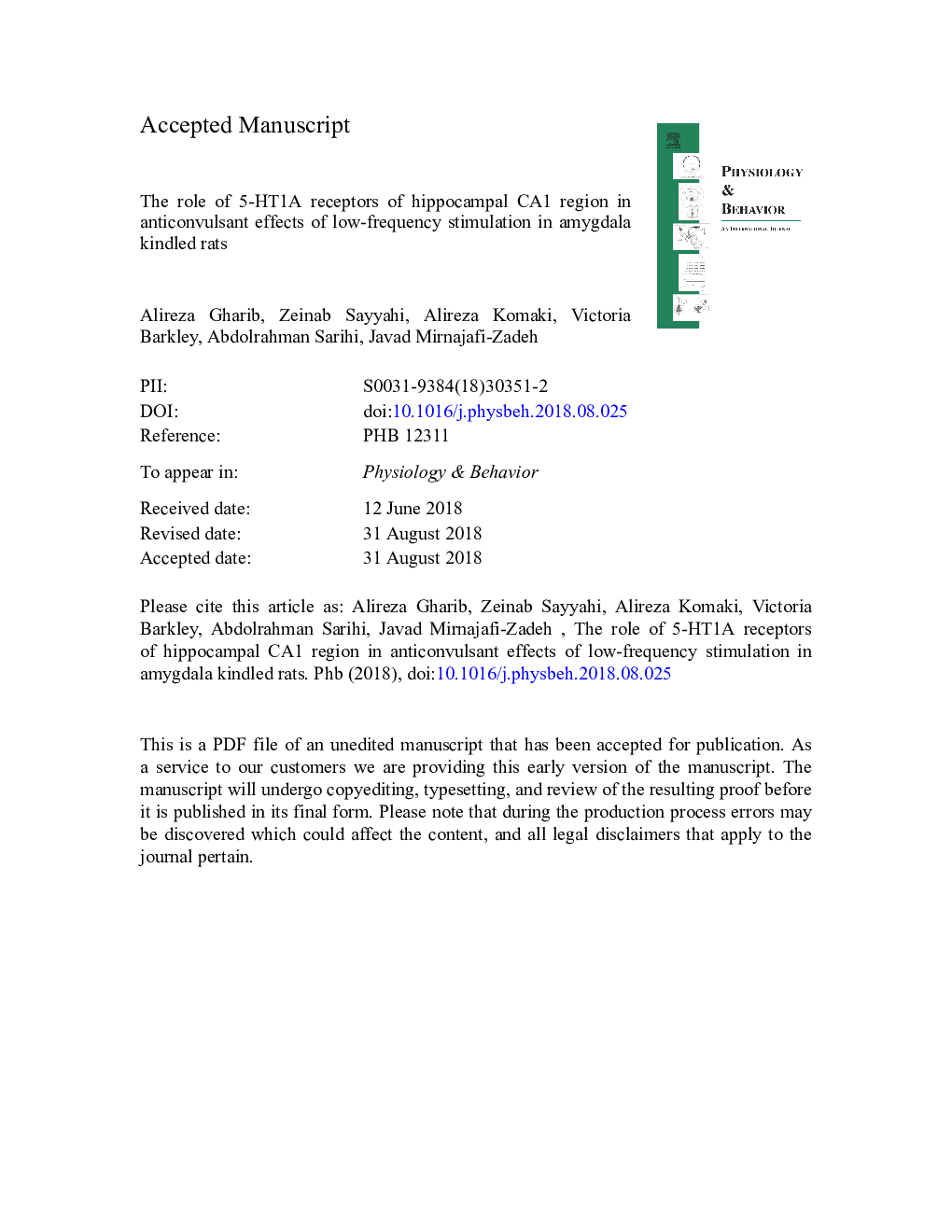| Article ID | Journal | Published Year | Pages | File Type |
|---|---|---|---|---|
| 10143595 | Physiology & Behavior | 2018 | 29 Pages |
Abstract
Low frequency stimulation (LFS) has been proposed as a method in the treatment of epilepsy, but its anticonvulsant mechanism is still unknown. In the current study, the hippocampal CA1 region was microinjected with NAD-299 (a selective 5-HT1A antagonist), and its role in mediating the inhibitory action of LFS on amygdala kindling was investigated. Male Wistar rats were kindled by amygdala stimulation in a semi-rapid kindling manner (12 stimulations per day). LFS (0.1â¯ms pulse duration at 1â¯Hz, 200 pulses, 50-150â¯Î¼A) was applied at 5â¯min after termination of daily kindling stimulations. NAD (a selective 5-HT1A antagonist) was microinjected into the CA1 region of the hippocampus at the doses of 2.5 and 5â¯Î¼g/1â¯Î¼l. An open field test was also run to determine the motor activity of animals in different experimental groups. The application of LFS following daily kindling stimulations reduced the behavioral seizure stages, afterdischarge duration, and stage 5 seizure duration and increased the latency to stage 4 seizure compared to the kindled group. However, microinjection of NAD at the doses of 5â¯Î¼g/1â¯Î¼l, but not 2.5â¯Î¼g/1â¯Î¼l, blocked the inhibitory effect of LFS on behavioral and electrophysiological parameters in kindled animals. It could be presumed that 5-HT1A receptors in the CA1 area are involved in mediating the antiepileptic effects of LFS.
Related Topics
Life Sciences
Biochemistry, Genetics and Molecular Biology
Physiology
Authors
Alireza Gharib, Zeinab Sayyahi, Alireza Komaki, Victoria Barkley, Abdolrahman Sarihi, Javad Mirnajafi-Zadeh,
